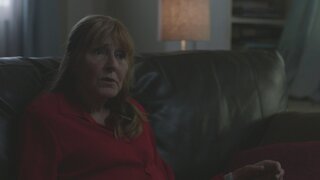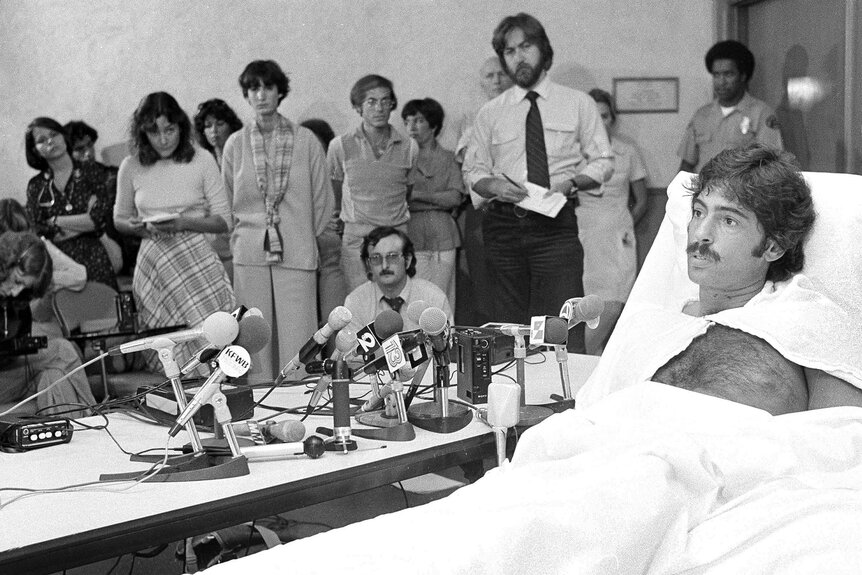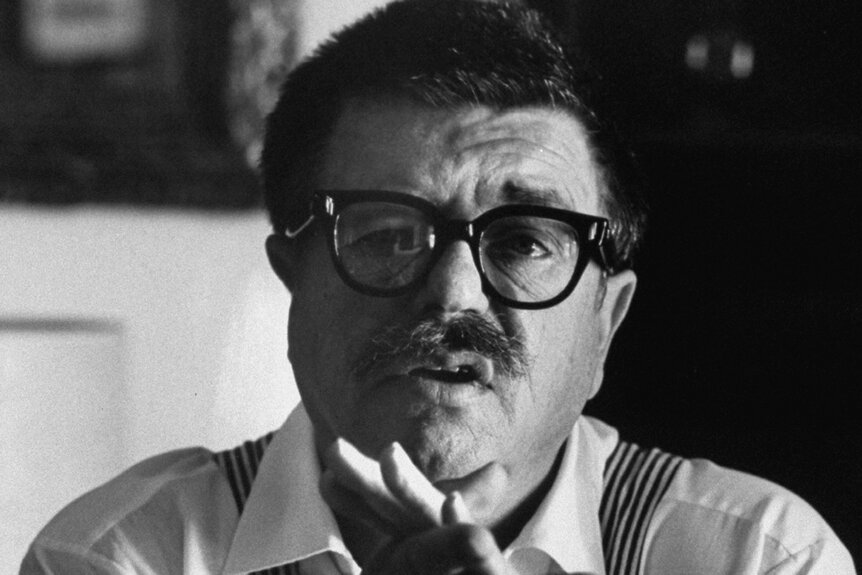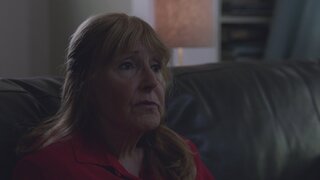Create a free profile to get unlimited access to exclusive videos, breaking news, sweepstakes, and more!
California Cult Attempts To Murder Attorney With Deadly Rattlesnake Attack
Just weeks after winning a suit against the Synanon cult, attorney Paul Morantz was bitten by a venomous rattle snake that had been stuffed in his mailbox.
When Frances Winn didn’t return home from a California beach one day in June 1977, her husband began to worry.
Winn, who had a history of depression and psychosis, was last seen taking a walk on the beach in Santa Monica, where she ran into a group of people from Synanon, a former addiction rehab center turned self-help organization.
“Pretty soon, Frances Winn was on a bus up to Northern California. She had no idea where she was going, or what was going on,” freelance journalist Hillel Aron told “Deadly Cults,” streaming now on Oxygen.
For nine days, Winn was held against her will at the Synanon compound and deprived of outside contact, reported The New York Times in 1978.
Desperate to reach his wife, Winn’s husband contacted Paul Morantz, a lawyer specializing in suits against mental health facilities, and together, they arranged for her release.
“I can only imagine how many people Synanon found wandering on the beach, who they got into their facility and never let out,” former Los Angeles Times reporter Narda Zacchino told producers.
Morantz sued the cult for imprisonment and other charges on behalf of the Winns, and they were awarded a $300,000 settlement against Synanon and its president, Charles “Chuck” Dederich, according to “Deadly Cults.”
The victory, however, was short-lived, and Morantz quickly became the organization’s next target.
In October 1978, three weeks after the lawsuit with Synanon concluded, Morantz was bitten by a four-foot rattlesnake that had been stuffed inside his mailbox.
“When the first responders showed up, Paul Morantz said, ‘Synanon! Synanon! Synanon! Synanon!’” Senior Trial Deputy John Watson told producers. “There was no doubt in his mind that Synanon was responsible in some way.”
Morantz was rushed to a local hospital, where he was placed under intensive care and survived the attack.
Investigators, who were puzzled as to why a rehabilitation group would try to carry out a murder, dug deeper into Synanon and its disturbing treatments.
Founded by Dederich in 1958, Synanon began as an addiction rehab center in Southern California, taking its name from the Greek prefix syn- (meaning “coming together”) and -anon (derived from Alcoholics Anonymous). By 1974, the organization boasted more than 1,700 members and around $22 million in assets, all of which became tax-exempt after the organization registered as a church, according to “Deadly Cults.”
Described as “an experimental society,” the Church of Synanon marketed itself as a lifestyle community offering a variety of self-help resources, and soon, it was attracting more than just addicts.
“I wasn’t a dope addict. I hadn’t used drugs. I went to Yale Graduate School, but then I decided I had to do something different. So, I joined Synanon to make things better for the world,” former cult member George Farnsworth told producers.
The organization’s unorthodox treatment methods included “The Game,” a group therapy session in which members would hurl insults at the session’s subject.
“It was primarily for indicting another person, accusing them of some transgression. They smelled bad, they were too fat, they didn’t work hard. It was a little scary because there was a lot of yelling. It was difficult, painful, but it was part of the environment. It was what we did, so I did it,” Farnsworth told producers.
Members followed Dederich’s every whim, including shaving their heads and donning a uniform of overalls. “It was, in many ways, a 20 year-long game of follow the leader,” Aron told “Deadly Cults.”
At one point, Dederich decided that raising children within the cult was too costly, and he declared that members were not allowed to have any more children. Pregnant devotees were forced to undergo abortions, while male members over the age of 18 were coerced into getting vasectomies.
“He saw himself as a sort of messiah, a leader that could make people do anything, and I think he got a kick out of it because he had such power over people,” Zacchino said.
Diving deeper into the cult, investigators learned Dederich cultivated a private militia of members trained to serve as his “Imperial Marines” that kept order across Synanon’s facilities.
Dederich, who had become paranoid about outside influence, promoted violence and told his members to protect themselves by any means necessary, specifically against attorneys looking to expose them.
In particular, Dederich felt threatened by Morantz, whose settlement enraged the cult leader.
“Paul Morantz was making some headway in letting the public know about what was happening with Synanon, and Chuck decided that he wanted to do away with Paul Morantz,” former member Celena Wittman told producers.
Prior to the rattlesnake attack, neighbors saw a white van parked outside Mortantz’s house and wrote down the license plate number, which came back as registered to the Church of Synanon.
The same car was later spotted driving near Pacific Palisades, and when police noticed the plate number, they pulled them over. Inside were Synanon members and Imperial Marines Joe Musico and Lance Kenton, and they were held on suspicion of involvement in the rattlesnake attack.
“It was no secret that Charles Dederich wanted to at least hurt Paul Morantz if not kill him. So, Lance Kenton and Joe Musico thought up this plan, and they went and found a rattlesnake,” Aron said.
Dederich broadcasted his teachings to multiple Synanon facilities through “The Wire,” a low-power FM radio station, and the lengthy sermons were often recorded on tape. Believing these recordings could link Dederich to the rattlesnake attack, authorities obtained a search warrant for the cult’s Tulare County compound in Central California.
"[They] found the tape that had this particular rant about lawyers … and we seized that, and that become the pivotal piece of evidence … I was sitting there listening to Charles Dederich soliciting crimes, including everything Paul Morantz had been saying for all this time,” Watson told “Deadly Cults.”
Watson tracked Dederich to a home in Lake Havasu, Arizona, and he was arrested and charged with conspiracy to commit murder.
Ironically, once authorities found him, Dederich “gave all the appearances of a man who was very, very drunk,” said Watson. The Synanon leader was so intoxicated that he had to be carried out in a stretcher.
Due to his rapidly declining health, Dederich was offered a deal and pleaded no contest, resulting in a sentence of five years of probation with a $5,000 fine, according to “Deadly Cults.” As part of the plea deal, he was banned from associating with Synanon ever again.
Kenton and Musico pleaded no contest to attempted murder and were sentenced to one year in jail and three years of probation.
In 1982, the Internal Revenue Service revoked Synanon’s tax-exempt status. They were forced to pay $17 million in back taxes, which bankrupted the organization. Dederich died in 1997.
To this day, Morantz suffers from a lifelong illness related to the rattlesnake venom, which requires him to receive blood transfusions every other week.
For more on Charles Dederich and the Church of Synanon’s violent religious order, watch “Deadly Cults” now at Oxygen.com.


































